Impact of Factory Agriculture on Animals
Every year, around 80 billion land animals are slaughtered for human consumption by many estimates. When it comes to fish and other aquatic animals, this heartbreaking figure soars into the trillions.
While nearly all terrestrial farmed animals — and increasingly fish, too — are raised intensively on factory farms, animals will suffer and die on small farms, too.
Some farmed animals, including cattle and pigs, are protected by the Humane Methods of Slaughter Act, but whistleblowers and investigators have revealed the agony of many who endure violent abuse or are conscious in their final moments. Despite comprising the vast majority of land animals killed for food, chickens and other birds considered “poultry” are not protected by this law or by the Animal Welfare Act.
On the grueling journey from farm to slaughterhouse, animals are most often crammed into overcrowded trucks and given neither food and water nor protection from weather extremes.
All of this anguish is inflicted so that multi-billion-dollar companies can profit from an unsustainable global demand for meat and other animal products.
Please continue reading to learn more about animal agriculture’s impact on the most commonly farmed animals and ways you can make a difference.
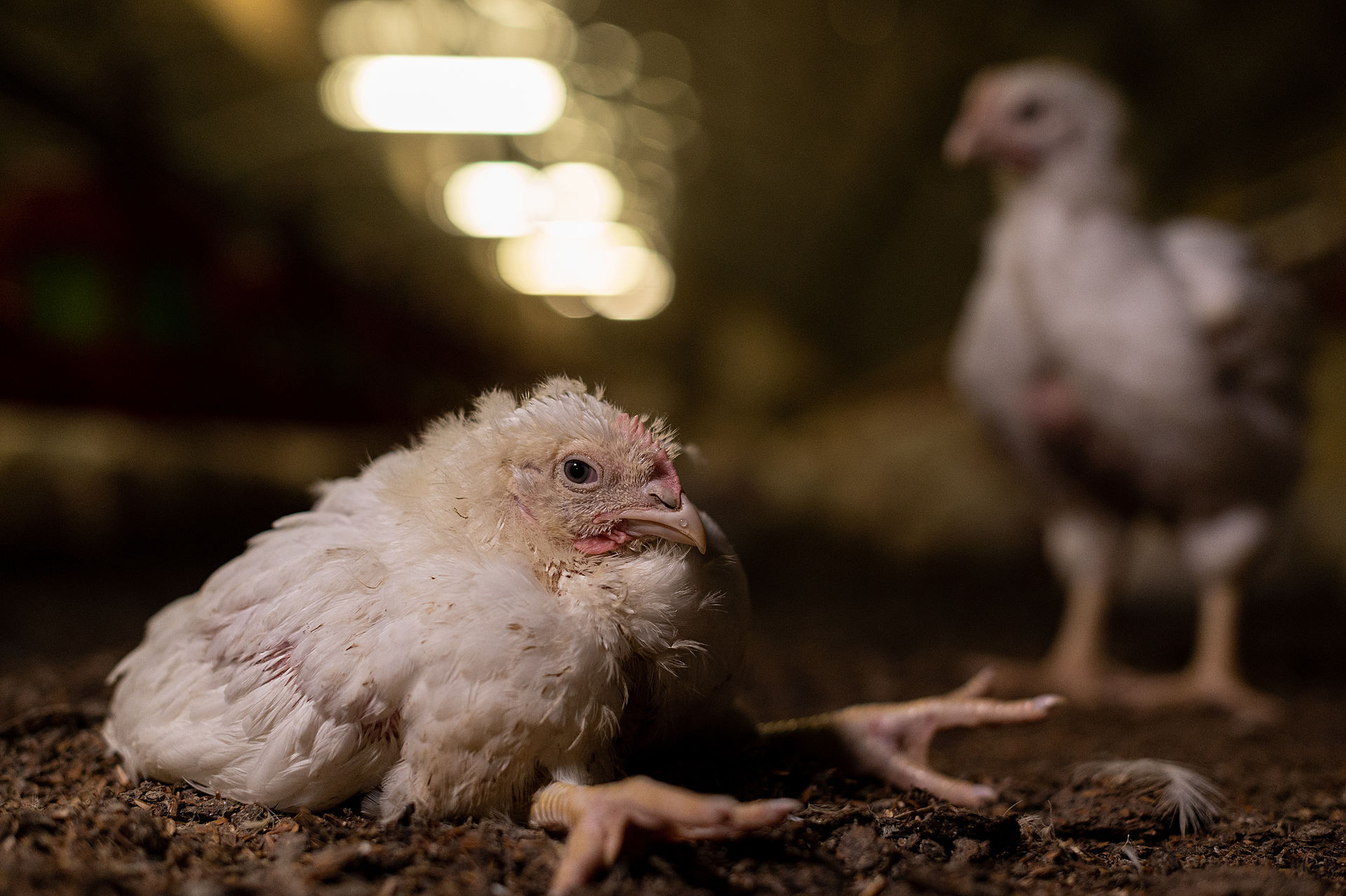
Credit: Stefano Belacchi / Equalia / We Animals Media
Chickens
- Around 70 billion chickens are killed annually, according to many estimates — over 8 billion in the U.S. alone.
- Farmed chickens endure painful practices considered standard in the poultry industry, including having their beaks trimmed or burned off without anesthesia. The resulting pain or loss of sensation can lead to reductions in activity and important behaviors — feeding and preening.
- In the egg industry, the majority of hens are confined to ‘battery cages,’ crowded and tiny metal cages so small the birds cannot turn around or even stretch their wings. Just 34 percent of U.S. egg-laying hens are raised cage-free.
- Male chicks born into the egg industry are immediately killed after hatching, considered ‘useless’ for their inability to lay eggs or grow large enough for profitable meat. In the U.S. each year, 300 million are ground alive or dropped into crowded bags to die of suffocation.
- Today, most chickens raised for meat — known to the industry as ‘broiler birds’ — are selectively bred to grow unnaturally large at a rapid rate so that more meat can be produced at a cheaper cost. This can leave the animals unable to support their own body weight and suffering from cardiopulmonary conditions.
- On a large farm, as many as tens of thousands of birds may be crowded into a single shed, most often windowless, barren, and dirty. High concentrations of ammonia from their waste can burn the birds’ skin and cause respiratory damage.
- Some of these chickens will not even be able to survive long enough to be slaughtered at around 45 days old. The effects of rapid growth on their top-heavy bodies may leave birds unable even to reach food or water.
- Those birds who survive the farm are transported in small, crowded crates on transport trucks in all weather.
- At the slaughterhouse, the birds are hung upside down, their legs in metal shackles, and may be stunned in electrified water — but this is often ineffective. Sadly, many chickens are conscious during the steps to follow: a scalding tank to remove their feathers and the knife that cuts their throats.
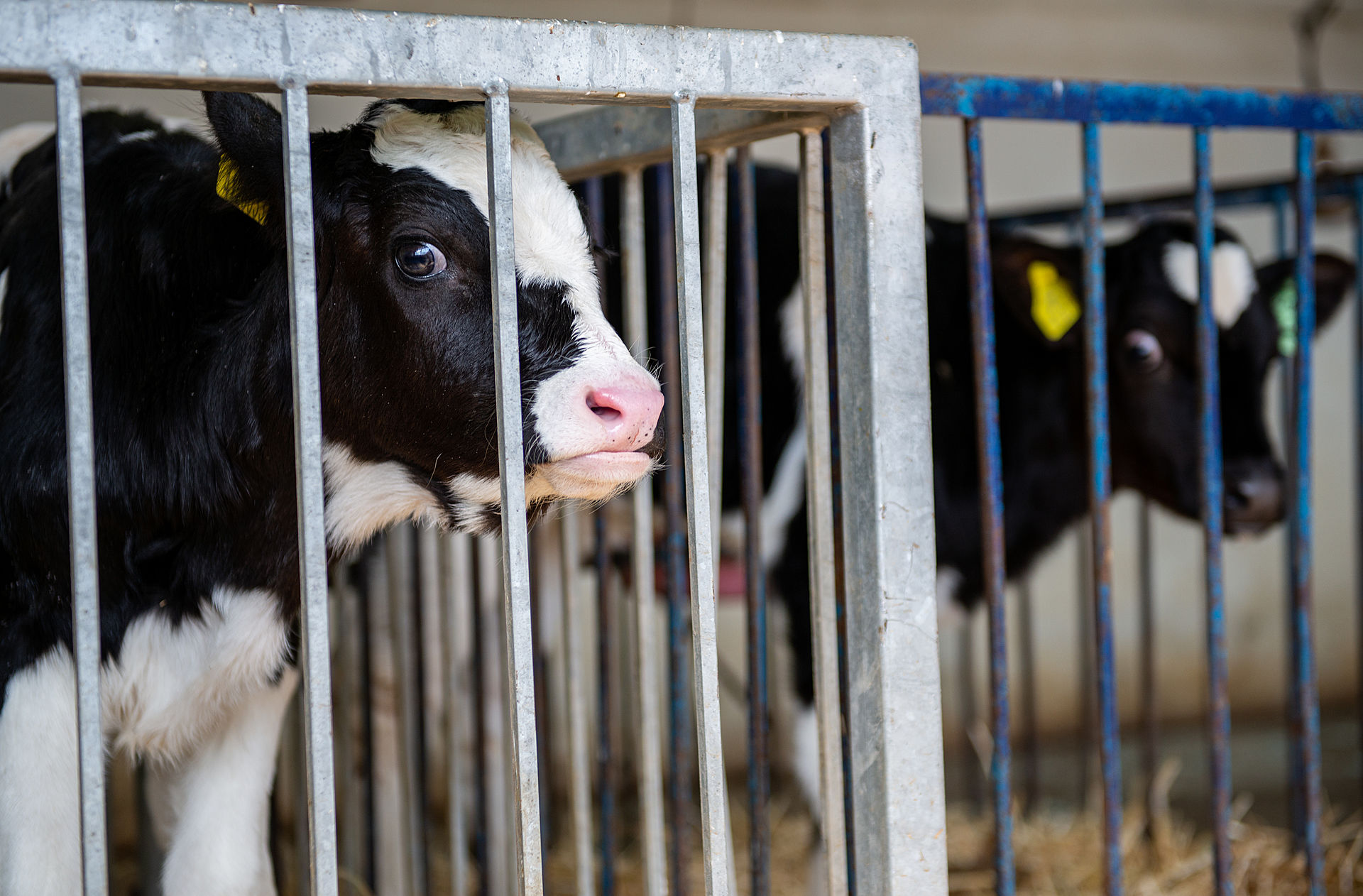
Credit: Havva Zorlu / We Animals Media
Cattle
- In 2020, more than 293 million cattle were slaughtered for human consumption.
- The S. is the largest beef producer in the world, killing more than 30 million cattle every year.
- While some consumers may believe that cows raised for dairy do not suffer and are not killed, this is far from the truth. Dairy cows will ultimately be slaughtered, meeting the same fate as cattle directly raised for their flesh. In the U.S., there are more than 3 million dairy cows.
- A dairy cow is repeatedly impregnated by insemination. Following nine months of pregnancy, her calf will be taken away almost immediately after she gives birth.
- Investigators and farmers alike have witnessed the heart wrenching reactions of mother cows to this forced separation, which can have lasting emotional impacts on calves.
- Today, many cows are selectively bred for unnatural levels of milk production, causing many to develop mastitis (a painful infection of their utters, which can also occur in the breasts of lactating humans).
- The repeated milking of cows by machines, as well as other conditions on dairy farms, can cause cuts and wounds to their udders, which may become infected.
- The cycle of dairy production will continue until a cow is physically unable to produce more milk or withstand more pregnancies. At this point, no longer profitable for the industry, she will be transported to a slaughterhouse — like other farmed animals, sometimes enduring many hours on a truck and harsh weather.
- The exhausted, worn-down bodies of dairy cows — usually at only five or six years old — are most often used to produce cheap varieties of meat, such as ground hamburger beef.
- When born on dairy farms, female calves will most likely be kept to be raised for milk, enduring the same life as their mothers. Males are most often sent to beef or veal farms.
- Cattle raised for beef most often begin on ‘feedlots,’ where they are fed a diet designed to make them gain weight quickly.
- While ranching proponents may argue that life outdoors means these cattle do not suffer, this is untrue: on feedlots, cattle may die due to extreme temperatures or common respiratory diseases, and must endure crowding.
- Of the cattle industry, veal farming is perhaps most well-known by the public for its cruelty. Yet, the fact of the matter is, veal production is made possible by the dairy industry and its selling of unwanted male calves.
- Until they are slaughtered at only around 18-20 weeks old, calves raised for veal are most often tethered or chained in small crates, isolated from other animals.
- Veal calves are also purposely left malnourished, and in place of their mother’s milk, they are fed a diet low in iron. This deficiency leaves their flesh the pale, grayish color sought by veal producers.
- On veal farms, calves have been known to exhibit “suckling behaviors,” mimicking nursing on objects or other animals, as they cannot nurse from their mothers.
- Although they are killed at different ages, cattle from the beef and veal industries will all be slaughtered — hung in shackles by a back leg as they are moved down a conveyor belt to their deaths.
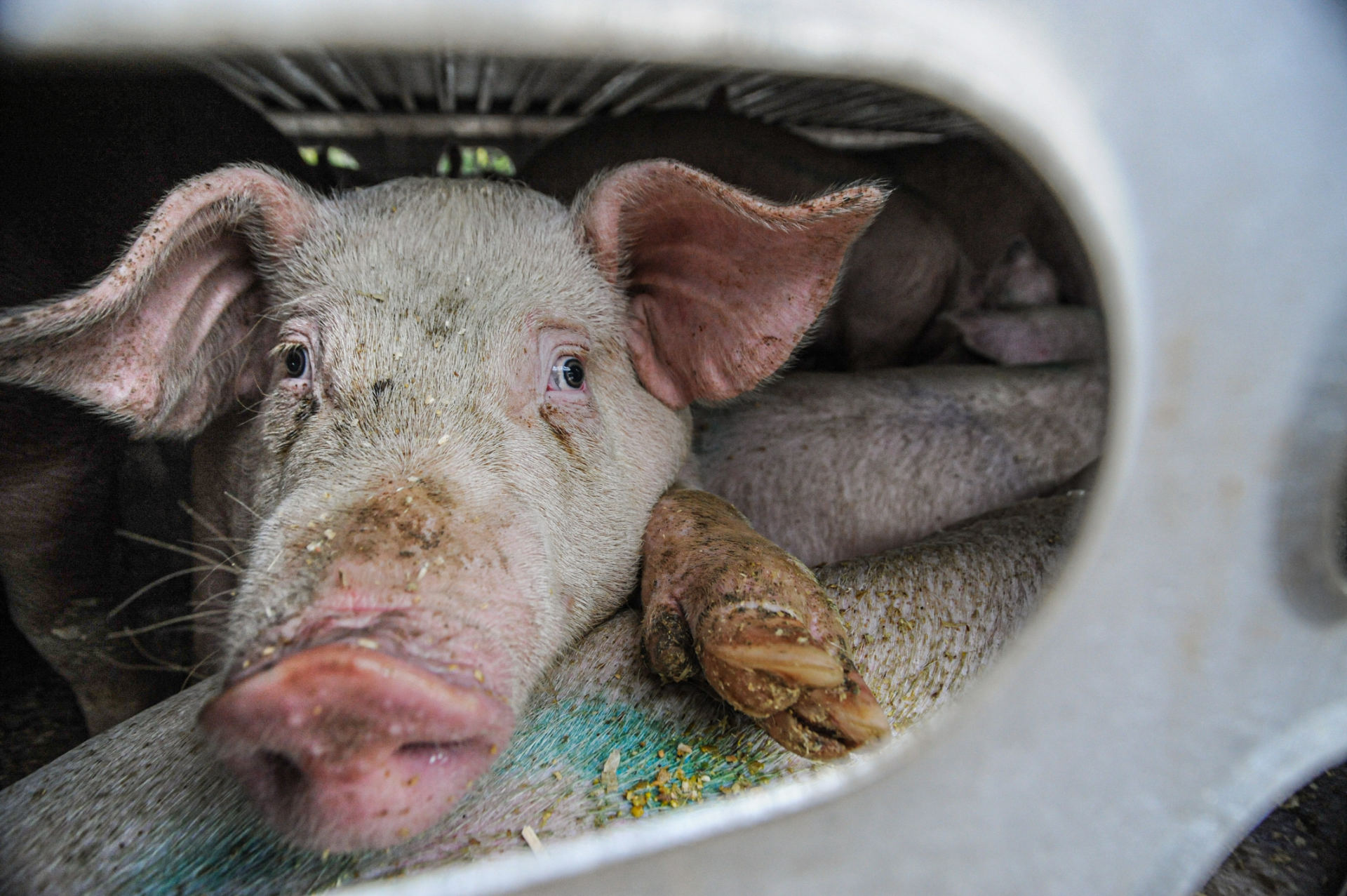
Pigs
- Around 780 million pigs are farmed worldwide, with China accounting for more than half of global production.
- The U.S. is the world’s second largest exporter of pig meat, behind only the European Union, and exported over $7.7 billion worth in 2022.
- Sadly, despite the vast suffering caused by the production of pork, its consumption is on the rise. Pork has become the most widely consumed protein in the world, followed closely by poultry.
- Despite falling under the protections of federal welfare laws, pigs often suffer acts of abuse as well as cruel practices considered standard by the pork industry: including piglets being castrated without the use of anesthesia, causing lasting pain.
- Investigations have revealed that sick or injured piglets unlikely to survive are sometimes killed by violently slamming their heads against the ground.
- Female breeding pigs, known as ‘sows,’ are typically impregnated two times per year. They are often confined to tiny crates known as gestation crates throughout their pregnancy, which can cause injuries and repetitive stress behaviors.
- Shortly before the birth of her piglets, a mother pig is often confined to a farrowing crate. The metal bars of her tiny confines prevent her babies from reaching their mother.
- At the slaughterhouse, some pigs are stunned with electric shock prior to slaughter, while others are gassed with carbon dioxide. In both cases, this is not always effective, leaving some animals conscious as they are shackled and killed.
- Most pigs are slaughtered at only 5-6 months old.
Turkeys
- In 2020, over 293 million turkeys were farmed globally. 216.5 million turkeys were slaughtered in the U.S. in 2021.
- On average, 45-46 million turkeys are killed for the U.S. Thanksgiving holiday
- Like chickens and other “poultry,” turkeys are left unprotected by federal welfare laws. This applies throughout the entirety of their raising, transport, and slaughter.
- Turkeys endure some of the same practices inflicted upon farmed chickens without any pain relief, including debeaking.
- Their selective breeding for rapid growth has left male turkeys too large to reproduce naturally. Today, turkey hens are artificially inseminated.
- Turkeys are vulnerable to illness, and especially on large-scale poultry farms, disease can spread easily and rapidly.
- The age at which turkeys are slaughtered varies, with most killed at 9 to 24 weeks old. Like chickens, some are not effectively stunned, and may be conscious when they are scalded and killed.
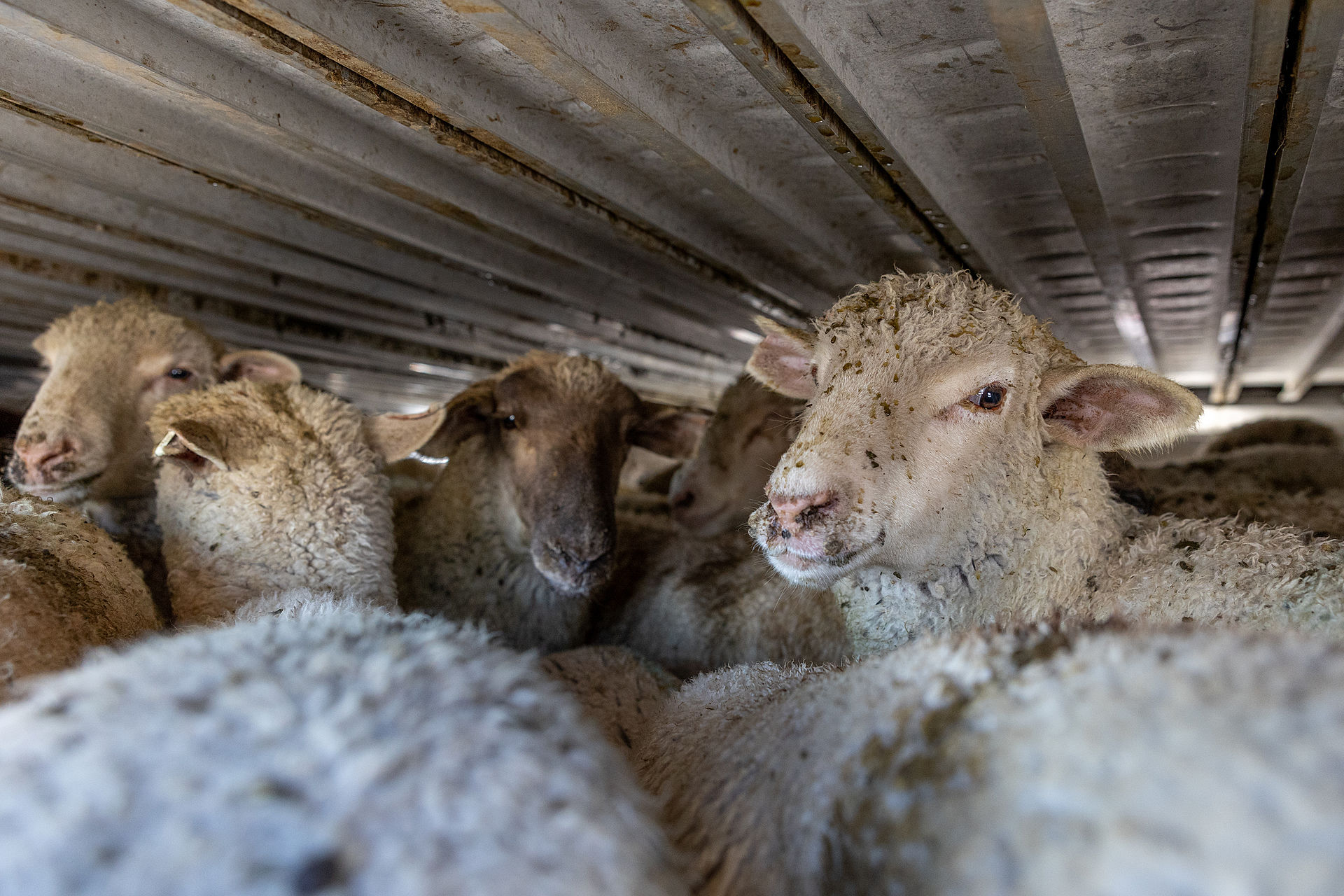
Credit: Wes Burdett / We Animals Media
Sheep
- More than 1 billion sheep are farmed around the world, used for many products including meat, milk, and wool.
- The U.S. and China are the world’s biggest consumers of sheep meat, and Romania is the top exporter of live sheep.
- During export from several nations, sheep may endure grueling and dangerous transport by ship. In 2019, the sinking of just one vessel led to the drowning of 14,000 sheep.
- As of January 1, 2023, there were more than 5 million farmed sheep in the U.S., and the nation produced 2 million pounds of wool.
- While many consumers may believe that sheep are not harmed for wool production, this could not be further from the truth. During shearing and mulesing, sheep may endure violent handling and abuse and suffer wounds and injuries.
- Sheep are killed at 6-8 months old, while some lambs — such as those killed for the Easter holiday — may only be 3 months of age or younger.
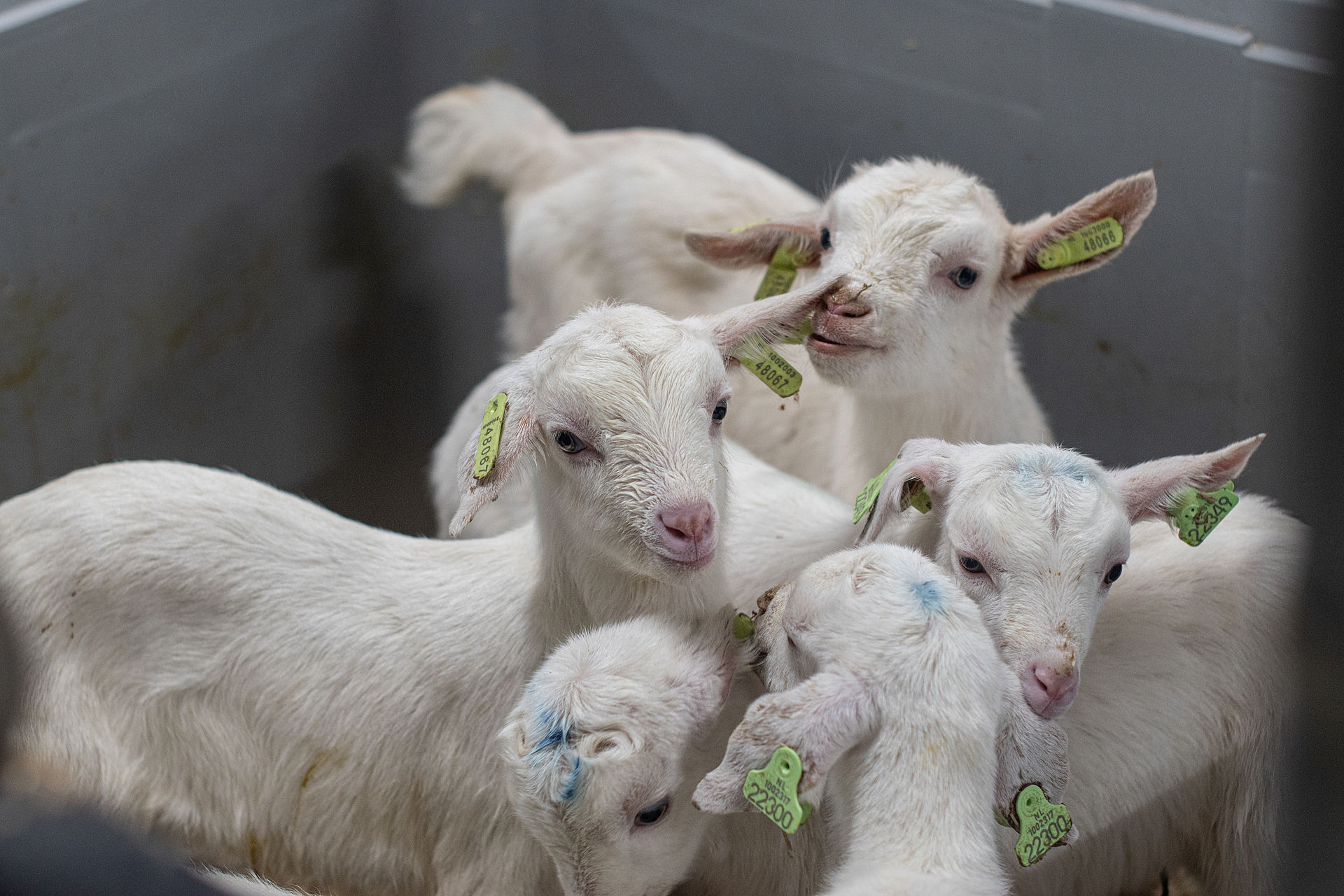
Credit: Come Closer Project / We Animals Media
Goats
- Globally, around 1 billion goats are raised for food. Like cows, they are farmed for both their flesh, milk, and hair.
- There are around 7 million farmed goats in the U.S.
- Young goats, known as ‘kids’ — primarily those raised for milk — have their growing horns burned off with no anesthesia, in a painful practice known as ‘disbudding.’
- Like piglets, male kids are sometimes castrated without any pain relief.
- Like cows, dairy goats who can no longer produce milk are slaughtered at only a few years of age. And investigations have shown that goats suffer for milk production, just as they do for meat — enduring abuse, crowded and filthy conditions and repeated impregnation and exploitation in both industries.
- Most goats raised for their meat are killed at less than a year old. And like dairy cows, goats who cannot produce milk or pregnancies anymore are slaughtered when their tired bodies are no longer profitable.
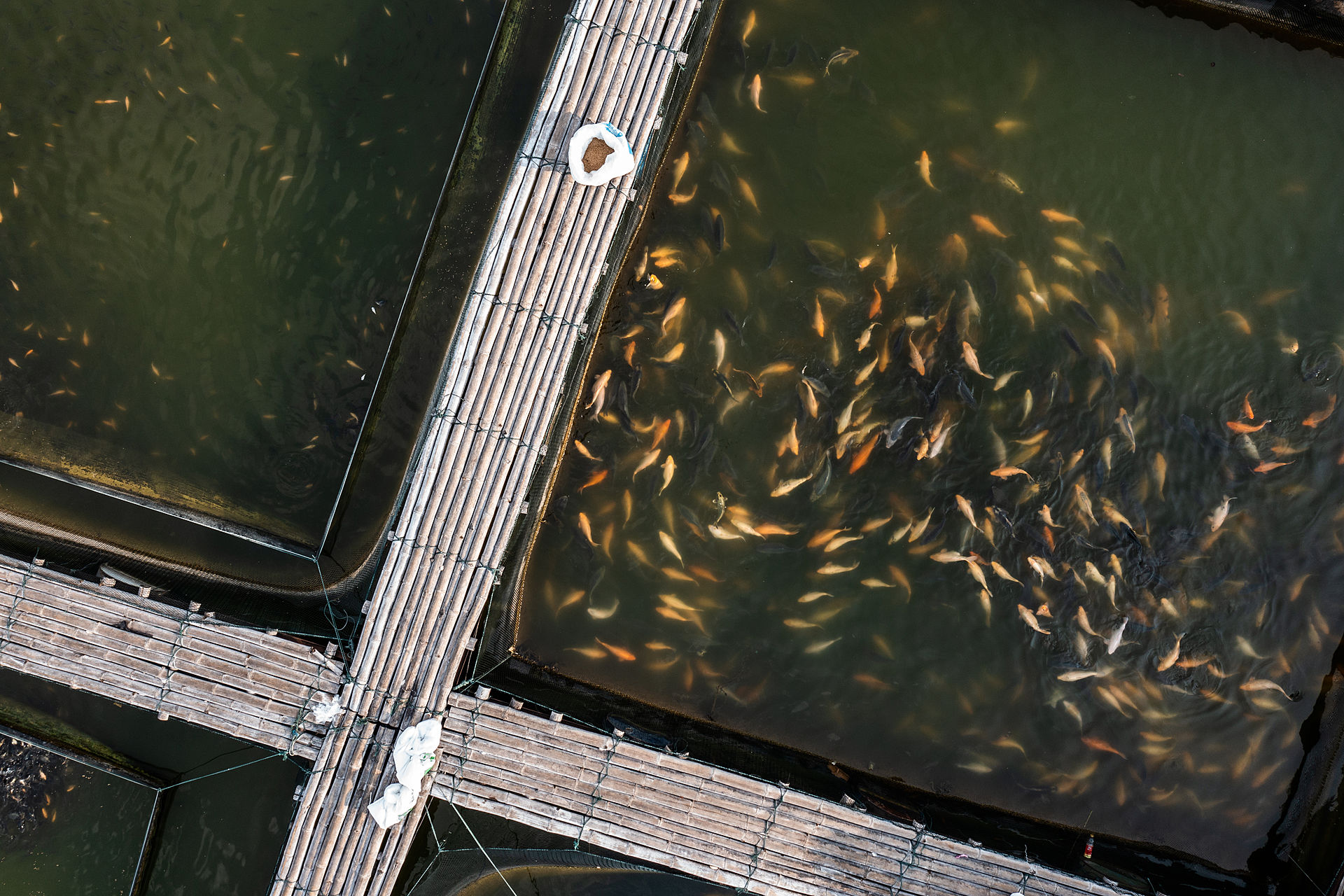
Credit: Lilly Agustina / Act For Farmed Animals / We Animals Media
Aquatic Animals
- Aquaculture is the fastest growing sector in our food system, and now accounts for at least half of the fish sold for human consumption.
- Hundreds of marine species are now raised on ocean-pen or land-based farms, including salmon, trout, shrimp, oysters, clams and many more.
- To the seafood industry, the fish raised and killed are mere products, counted in tons and not as individuals. In 2020, a record 5 million tonnes (over 96 million tons) of farmed fish and other aquatic animals were killed globally.
- Like the billions of animals farmed on land, fish suffer immensely on farms. Whether confined in ocean-based pens or in tanks, these sensitive animals are crowded together in filthy water, living in their own waste and vulnerable to the rapid spread of disease and parasites.
- Suffering goes even beyond that experienced by the captive-raised fish: Illness on farms, as well as antibiotics used in an attempt to control the problem, can spread into surrounding waters, impacting wild fish populations and their ecosystems.
- For the fish exploited by the aquaculture industry, death can be slow and terrifying: most are left out of water to die of suffocation, put on ice or submerged in ice water, poisoned with carbon dioxide in their water, or gutted without being stunned.
The good news is you can oppose the harms of animal agriculture.
The good news is that there are ways you can help, each day, to reduce the suffering of animals:
Eliminating your consumption of meat and other animal products is the most effective way (link to eat vegan section) to opt out of supporting animal agriculture and its devastating impacts.
Our rescued residents (link to animals section) at Rosie’s Farm Sanctuary are inspiring ambassadors for their species, for the billions of animals just like them who are suffering in this horrific system of food production. You can be a part of rescue, education, and advocacy work — from wherever you are! To support our life-saving efforts for animals, please donate today.